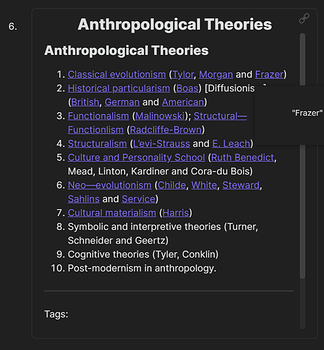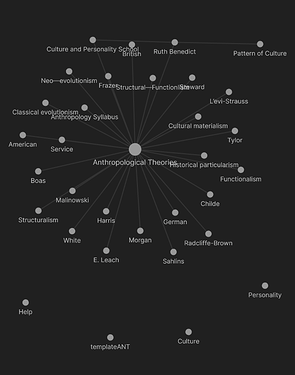Hello guys,
This post is kind of long, please bear with me :) (late night!).
TL;DR: I am new; new subject; long answer type exam; fixed, but long syllabus; various sources with frequent updation.
-
About my level and type of requirement:
- First of all, I am not shy of accepting that I am very new to the digital note taking. I haven’t used any app for taking notes, but mostly relied on handwritten or no notes at all (college presentations, pdf etc.).
- Currently, I am preparing for an exam and I feel the need to have a growing repository for the knowledge collected from various sources.
- My area of interest is Anthropology. I am new to that as well. So, I figured I will start putting up notes as I read.
-
What I have learned and applied so far:
- I watched a few videos for Zetterkastel and tried to implement it for the part of a topic that I had covered. I was following the UID system, and later realized they just make it more complicated for me since Obsidian doesn’t allow non-unique titles anyway.
- So, I got rid of all those names and converted back to simple title.
- The work flow was complex at first and with some basic understanding I kept on changing the flow according to my needs.
- Workflow:
- Syllabus: has the whole syllabus for the subject (Anthro in my case)
- Individual (Main) Bullet Heads to be converted to a pages.
- Earlier, I was using tags to all the subtopics to the main Bullets.
-
- Then, the graph seemed too clumsy. Too Central. So, I separated the title into a new page and embedded it there itself.
-
- Workflow:
- I watched a few videos for Zetterkastel and tried to implement it for the part of a topic that I had covered. I was following the UID system, and later realized they just make it more complicated for me since Obsidian doesn’t allow non-unique titles anyway.
Please mind that, if I am linking a syllabus, then almost each word is potential topic. with some interlinking as well.
The graph till now looks like this. Its too early to say, but still.
Questions:
- Which paradigm/MOC should I choose? (Zettlekastel/IMF(dont know)/ etc??)
- The exam has a long answer type questions. Also, answers generally follow Intro-Body-Conclusion format.
- I will be having topics/data/current news related to this topic to be added as well. for the next 1.5 years.
- I need to keep revising these as well. If possible, data to ANKI can be a bit helpful.
- For each topic/page what format should I follow? I mean, Cornell System type thingy for each page or something else.
- The whole thing feels too big to manage, how can we simplify the approach.
- Also, I wanted to know if I can have data at both the places?
-
I mean, if I make a link(page) with a bit of info about Culture, say a 'definition of culture" by “Ruth” and another by say “Mead”.
-
I wanted to have a single page where the “Culture” definitions by all “Ruth”/“Mead”. Is there a way I can have that page automatically?
-
The “Culture” page should display all the data linked as culture inline (not embedded).
-
OR, should I use tag? backlinking shows the links, but only if I could create an automatic page of all the links. The whole window of Links as a page which keeps updating automatically.
-
I am just confused with so any terms around, learning all of them is not feasible at this point. It would be great if you could have some time out and help me choose one way.
-
THANKS ![]()
Any help would be really appreciated.
PS. Sorry for such a long post.


